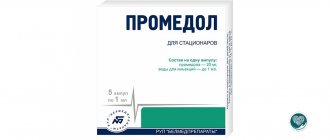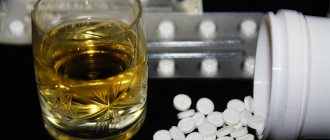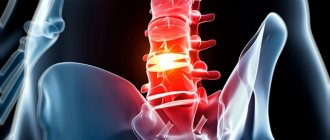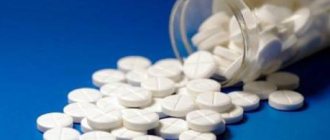Content:
- Clonazepam: mechanism of action
- Physiological effects
- Pathological effects
- Addiction and withdrawal symptoms
- Overdose
Medicines are invented for a good purpose - for the treatment of various pathologies. But many of them also have negative properties, including the ability to cause drug addiction. Such drugs include clonazepam - the action of this drug is aimed at eliminating neurological and mental problems, but it also exhibits psychotropic properties.
Clonazepam: mechanism of action
The drug belongs to the benzodiazepines. It acts on GABA (gamma-aminobutyric acid) receptors. At the same time, the release of neurotransmitters that provoke excitation of nerve cells is blocked - as a result, processes that are too actively occurring in them are inhibited.
The substance is quickly absorbed into the bloodstream from the lumen of the small intestine. Its greatest amount in the blood is detected after 2-3 hours, at which time the most pronounced effect appears. Such a quick effect was appreciated not only by clinicians, but also by drug addicts - the medicine is used to relieve anxiety that develops when using a number of psychotropic substances.
The effect of the drug increases if it is used together with:
- barbiturates;
- opiates;
- alcoholic drinks;
- some antidepressants;
- desensitizing.
Physiological effects
When using this medicine, anxiety, fear and restlessness are relieved. Therefore, indications for its use are pathologies in which the following occur:
- psychomotor agitation;
- anxiety and panic attacks;
- epilepsy attacks;
- febrile convulsions - those that appear when body temperature rises (usually this is observed when its values are above 38 degrees Celsius);
- hypertonicity is muscle tension that can occur in a number of pathologies of the nervous and musculoskeletal systems.
Please note: The medicine has also been identified to have some other properties. Thus, under its influence, the slow-wave sleep phase becomes longer, and the fast sleep phase becomes shorter. But clonazepam is not used as a sleeping pill because it takes a long time to be eliminated from the body.
Contraindications
- Depression of respiratory function; respiratory failure in chronic obstructive pulmonary disease.
- Hypersensitivity to the active substance.
- Alcohol poisoning, accompanied by a weakening of vital functions.
- Acute condition after poisoning with sleeping pills or narcotic analgesics.
- Myasthenia gravis.
- Glaucoma (an ophthalmological disease in which there is increased pressure inside the eye; as well as involution of the optic nerve, which leads to a serious impairment of its function).
- Shock; coma
- Pregnancy.
- Severe depression (taking the drug may increase suicidal tendencies).
The drug is used with caution in diseases and conditions such as
- Spinal ataxia (motor dysfunction), cerebellar ataxia.
- Hyperkinesis (reflexive “violent” movements of different muscle groups).
- Chronic alcoholism, chemical dependence, use of psychoactive drugs.
- Hypoproteinemia (lack of protein in the blood serum), liver and kidney failure.
- Organic brain disorders, heart failure.
- Psychoses, bronchospastic syndrome, apnea (short-term cessation of breathing, which often occurs at night during sleep, which leads to death), swallowing disorders in children.
- Pre- and postoperative periods (since the drug suppresses cough reflexes).
- Old age of patients.
Clonazepam, like all medications, has contraindications for use. They must be taken into account before taking.
Contraindications to the use of Clonazepam are:
- respiratory failure;
- respiratory depression;
- acute intoxication with sleeping pills or narcotic analgesics;
- predisposition to angle-closure glaucoma or its acute attacks;
- shock or coma;
- myasthenia gravis;
- acute alcohol poisoning, as a result of which the immune system is weakened and the functioning of vital organs and functions is disrupted;
- severe depression;
- pregnancy and lactation;
- hypersensitivity to the active component of the medication.
Indications for careful use of Clonazepam are: hyperkinesis, cerebellar and spinal ataxia, chronic alcoholism, renal/liver failure, psychosis, bronchospastic syndrome, organic brain damage, sleep apnea.
In the presence of such diseases, before prescribing the drug, the attending physician compares the expected benefits of treatment and the risks.
Tablets are not used in case of hypersensitivity to the substances of which they are composed. The drug is contraindicated in the following conditions:
- myasthenia gravis;
- disturbances of consciousness;
- bearing a child, breastfeeding;
- glaucoma (angle-closure);
- breathing disorders of central origin, severe respiratory failure;
- severe renal and liver failure;
- manifestations of sleep apnea syndrome;
- alcohol poisoning;
- acute porphyria.
Pathological effects
They develop not only when taking higher dosages or using them for a long time. Patients complain that during therapy with this drug they experienced:
- feeling of mental and physical fatigue (even when performing normal amounts of work);
- constant drowsiness;
- difficulty trying to concentrate;
- amnesia - forgetfulness;
- “lubrication” of emotions;
- euphoria is what drug addicts take this drug for.
When taking clonazepam, the action time is 12 hours. The body quickly develops tolerance to it - it becomes insensitive in just a few weeks. Addicts are forced to take it in larger doses to produce a “high” effect.
A number of somatic disorders also develop. Many experienced disorders of the gastrointestinal tract - increased appetite, dry mouth, nausea, diarrhea. A number of patients experienced incoordination of movements, dizziness, and muscle weakness. Despite the fact that clonazepam relieves psychomotor agitation, it can also have the opposite effect - provoke increased motor activity.
But most of all, clonazepam is dangerous for the functioning of the cardiovascular and respiratory systems - it depresses breathing and provokes a decrease in blood pressure. Taking it for diseases of the blood vessels, heart and lungs can lead to significant disturbances in the functioning of these organs. If a person who has been diagnosed with such pathologies has just started using drugs and has not yet lost control of himself, he should first of all give up this drug.
When using clonazepam for narcotic purposes, the following occurs quite quickly:
- increased excitability;
- irritability;
- a feeling that something bad is about to happen;
- aggressiveness;
- panic attacks;
- insomnia;
- nightmares at night.
Treat alcohol addiction with clonazepam or other benzodiazepines
If a person suffers from alcohol dependence (also known as alcoholism), when seeking treatment to stop abusing this drug, a doctor may prescribe a benzodiazepine medicine such as clonazepam to relieve withdrawal symptoms. Anxiety and seizures are two symptoms of alcohol withdrawal, and benzodiazepines have been shown to be very effective in reducing these symptoms. This can help ease a person's transition from alcohol.
However, it is imperative that the physician carefully monitor the patient for signs of benzodiazepine dependence. These medications include your own risk of dependence and abuse. This can be especially dangerous if a person is suffering from a relapse and combines clonazepam administration with alcohol consumption.
Addiction and withdrawal symptoms
Clonazepam is dangerous not only because of the symptoms described - side effects also manifest themselves in the form of addiction. It happens:
- mental - a lover of “expanding consciousness” does not want to give up this psychotropic because he wants to be in a state of euphoria;
- physical - organs and tissues are no longer able to function normally if the drug does not enter the body.
With a sharp cessation of use, abstinence develops (syndrome o). There are:
- insomnia - it is difficult for an addict to fall asleep, he easily awakens under the influence of even unexpressed stimuli (light, sound, tactile);
- pain throughout the body;
- restlessness to the point of throwing;
- psycho-emotional leaps;
- nervousness;
- hot temper.
Suicidal intentions may also appear. In addition, the addict begins to feel that the world is “somehow different” - the usual perception of people, events, phenomena, and objects is disrupted. In severe forms of withdrawal, seizures and psychotic reactions may occur, as when abruptly quitting alcohol.
Overdose
Since this drug is addictive, the addict takes it in larger quantities - an overdose occurs. In comparison with the same phenomenon when using a number of drugs, its symptoms are not critical. It usually manifests itself as memory impairment.
With an overdose, internal barriers disappear. This is manifested by swagger in behavior - a person can do or say something that he has not done or said before. Lethal outcome is almost impossible, but there are other warnings. Under the influence of clonazepam in high doses, concentration and the ability to control events around them sharply deteriorate, because of this there is a risk of an accident - a drug addict can get run over by a car, fall from a height, and so on.
Indications for use of the drug
The initial dose for children from 0 to 10 years old, with a body weight of up to 30 kg, is considered to be 0.01 - 0.03 mg of the drug per kilogram of weight per day. The therapeutic dose is allowed up to 0.1 mg, that is, several times higher than the initial one.
The dosage may be increased until improvements are noticeable or until side effects appear. If adverse reactions occur, the dosage is gradually reduced.
The maximum dose that can be prescribed to children is 0.2 mg.
For patients aged 10 to 16 years:
- The initial daily dosage is 1 mg, several times a day.
- Therapeutic - add 0.25 or 0.5 mg to the initial dosage.
For adult patients:
- The initial dosage is 1.5 mg.
- Therapeutic - 0.5 mg is added to the initial dosage.
Taking the drug, depending on the dosage, can be divided into three doses per day; or it will be done once every three days.
If the doctor’s testimony prescribes taking Clonazepam three times a day, then the dosage must be divided strictly into three equal parts; if this does not work out, and one dose is slightly larger than the others, then it should be taken immediately before bed.
Taking the drug for status epilepticus: by stream or drip. For infants and young children, 0.5 mg is administered intravenously. Adults - 1 mg.
Literature:
- Clonazepam: indications, side effects and possible non-medical uses. / Dokkedal-Silva V., Berro L.F., Galduroz J.K.F., Toufic S., Andersen M.L. / Harv Rev Psychiatry. 2019 September/October; 27 (5): 279-289. DOI: 10.1097/HRP.0000000000000227. / PMID: 31385811.
- Issues of clinical use of benzodiazepines: effectiveness, withdrawal syndrome / Chouinard J. / J Clin Psychiatry. 2004; 65 Supplement 5: 7-12. / PMID: 15078112.
- Barbiturates, benzodiazepines, anabolic steroids: history of creation, action, analysis: educational and reference manual / M. Yu. Zakharchenko, I. N. Melnikov, D. V. Kairgaliev; edited by S. Ya. Pichkhidze. - Saratov: KUBiK, 2015. - 189 p.
Causes of dementia
1. Diseases of the nervous system:
- Alzheimer's disease;
- Dementia with Lewy bodies;
- Primary progressive aphasia;
- Corticobasal degeneration;
- Parkinson's disease.
2. Poor blood circulation in the brain:
- Stroke in a “strategic” area;
- Chronic cerebral ischemia;
- Binswanger's disease.
3. Metabolic disorders:
- Somatogenic disorders (respiratory/hepatic/renal failure, hypoglycemia);
- Hypothyroidism (thyroid disease);
- Deficiency states (deficiency of B1, B12, folic acid, proteins).
4. Poisoning:
- Metal salts (aluminum, zinc, copper);
- Medicines (anticholinergics, barbiturates, benzodiazepines, antipsychotics, lithium salts, etc.)
5. Brain infections:
- HIV;
- Spongiform encephalitis (Creutzfeldt-Jakob disease);
- Meningoencephalitis.
6. Multiple sclerosis.
7. Traumatic brain injury.
8. Brain tumors.
9. Liquorodynamic disorders (normotensive hydrocephalus).
10. Alcoholism.
Thus, the causes of dementia can be very diverse. In some cases, these are incurable diseases; in others, they are diseases and conditions that can be corrected. Therefore, the opinion that dementia is completely incurable is erroneous, and the results of therapy will depend on the causes of dementia. Also, the symptoms accompanying the pathology largely depend on the causes of dementia.










